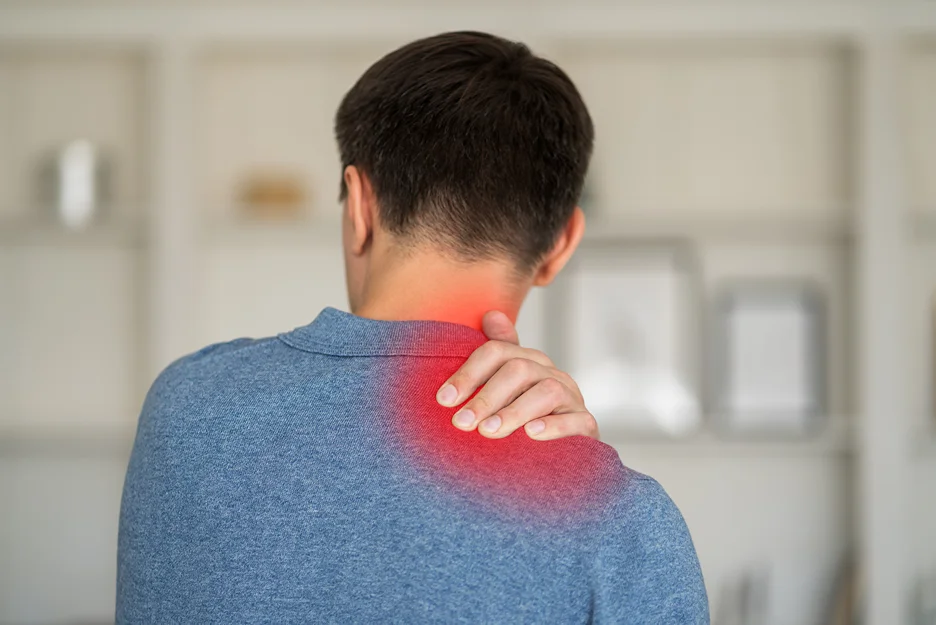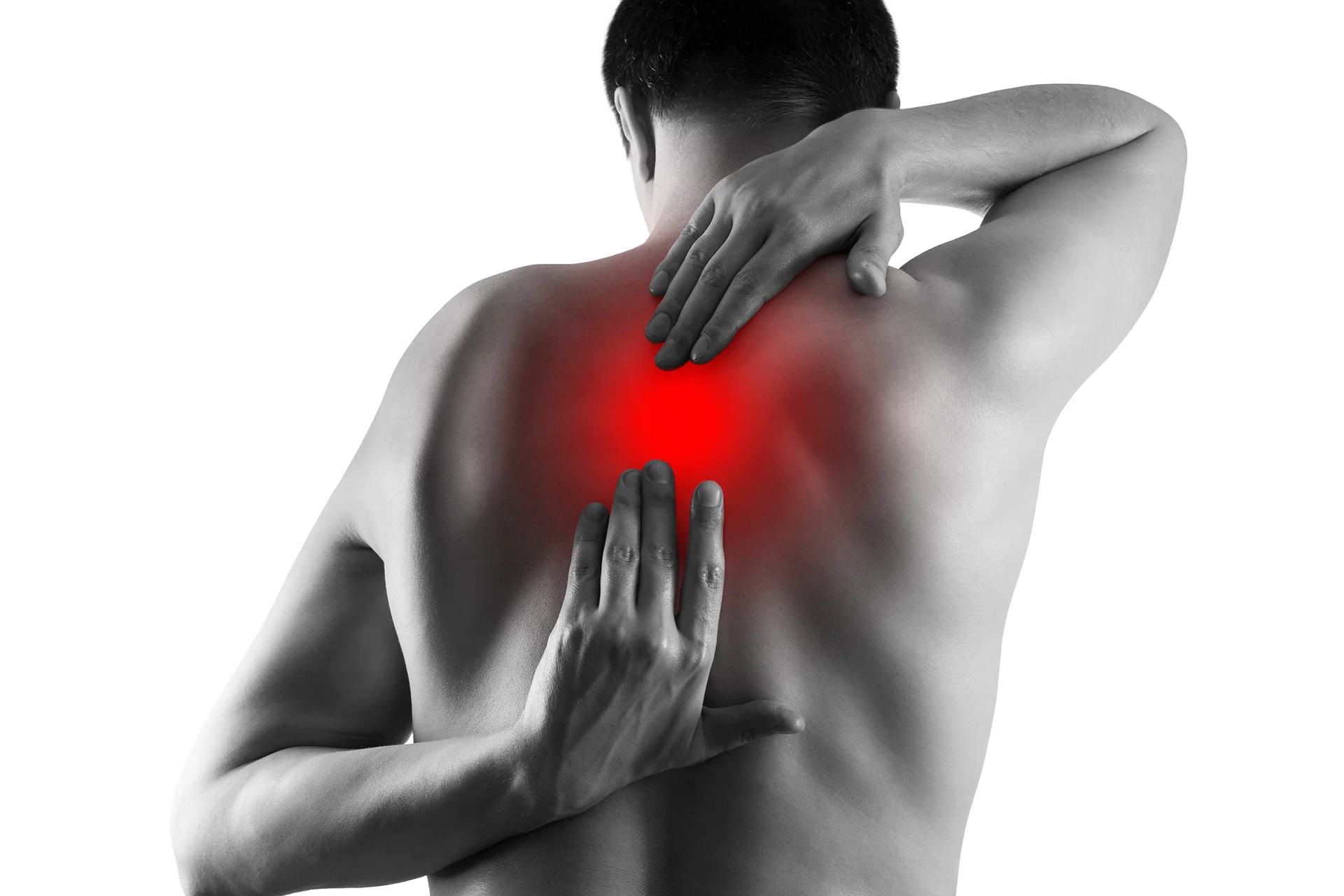If you’re one of the millions of adults suffering from debilitating upper back pain, you know how difficult it can be to find relief. But did you know that properly diagnosing your specific type of upper back pain is critical to creating an effective treatment plan?
At Kaly, we’re dedicated to empowering upper back pain sufferers like you with the knowledge you need to take control of your pain management. Part of this process involves learning about ICD-10 codes – the diagnostic codes doctors use to identify your particular upper back pain condition.
Keep reading as we answer the most common questions about ICD-10 codes for upper back pain and provide you with the information you need to get the targeted treatment you deserve.
What is the ICD 10 code for upper back pain?

There is no single ICD-10 code for general upper back pain. ICD-10 codes are very specific, identifying the exact region, side, acuity, and causation of back pain symptoms. Some examples of ICD-10 codes for upper back pain include:
| ICD-10 Code | Description |
| M54.12 | Radiculopathy of thoracic region |
| M54.6 | Pain in thoracic spine |
| M54.9 | Dorsalgia, unspecified |
| R07.89 | Other chest pain |
| M54.5 | Low back pain |
What is the ICD 10 code when upper back pain is unspecified?
When the specific cause or region of upper back pain is unknown, doctors use the ICD-10 code M54.9 to indicate unspecified dorsalgia or back pain. This code covers general upper back pain that cannot be further localized.
What are the separate ICD 10 codes for right and left upper back pain?
ICD-10 codes specify laterality for certain conditions. For example:
- M54.11 – Radiculopathy, thoracic region, right side
- M54.10 – Radiculopathy, thoracic region, left side
These codes differentiate right and left-sided radiculopathy originating in the thoracic spine. Other upper back conditions like muscle strains may also have distinct codes based on right or left side.
What is the ICD 10 code for mild upper back pain?
The ICD-10 system does not have codes defining mild, moderate or severe upper back pain. The closest option is to report uncomplicated, general upper back pain using code M54.9. Severity is indicated through additional diagnosis codes or described in clinical notes.
Which ICD 10 code is for a muscle strain in the upper back?
Muscle strains in the upper back are usually coded as:
- S29.012A – Strain of muscle and tendon of upper back, initial encounter
- S29.012D – Strain of muscle and tendon of upper back, subsequent encounter
- S29.012S – Strain of muscle and tendon of upper back, sequela
These codes specifically identify an upper back muscular strain injury.
Is there a specific ICD 10 code for upper back muscle pain?
Yes, myofascial upper back pain can be coded as:
- M79.1 – Myalgia of upper back
Myalgia refers to pain in the muscles and connective tissues of the upper back region, rather than the spine itself.
What’s the ICD 10 code for scapula back pain?
For pain localized to the scapula or shoulder blades, the ICD-10 code is:
- M25.51 – Pain in shoulder
- M25.519 – Pain in unspecified shoulder
- M25.512 – Pain in left shoulder
- M25.511 – Pain in right shoulder
These codes identify shoulder blade/scapular region pain as a musculoskeletal shoulder problem.
How is pain between shoulder blades represented in ICD 10 code?
Pain between the shoulder blades is classified as thoracic back pain in ICD-10 codes:
- M54.6 – Pain in thoracic spine
This code covers nonspecific pain symptoms in the upper back or thoracic spine.
How is thoracic back pain coded in ICD 10?
The ICD-10 codes for unspecified thoracic back pain are:
- M54.6 – Pain in thoracic spine
- M54.9 – Dorsalgia, unspecified
And thoracic radiculopathy is coded as:
- M54.11 – Radiculopathy, thoracic region
- M54.12 – Radiculopathy, thoracic region
These codes identify pain originating in the 12 thoracic vertebrae of the upper back.
What is the ICD 10 code for acute upper back pain?
Acute or short-term upper back pain is classified as:
- M54.5 – Low back pain, acute
- M54.6 – Pain in thoracic spine, acute
The addition of “acute” indicates the upper back pain has lasted less than 3 months.
What is the ICD 10 code for chronic upper back pain?
Chronic or long-term upper back pain is coded as:
- M54.5 – Low back pain, chronic
- M54.6 – Pain in thoracic spine, chronic
These specify upper back pain persisting for more than 3 months.
Which ICD 10 code represents both upper and lower back pain?
When pain involves both the upper and lower back, the appropriate ICD-10 code is:
- M54.9 – Dorsalgia, unspecified
This generalized dorsalgia code encompasses pain in any region of the back.
How is an upper back injury represented in ICD 10 code?
Upper back injuries like fractures have specific ICD-10 codes such as:
- S22.060A – Nondisplaced fracture of sixth thoracic vertebra, initial encounter
- S29.012A – Strain of muscle and tendon of upper back, initial encounter
These identify the nature and region of the upper back injury.
What are the reasons for upper back pain according to ICD 10?
Some common causes of upper back pain listed in ICD-10 include:
- M54.2 – Cervicalgia (neck pain)
- M54.12 – Radiculopathy of thoracic region
- M40.202 – Unspecified kyphosis, thoracic region
- M40.292 – Other kyphosis, thoracic region
- M53.82 – Other specified dorsopathies, thoracic region
Where can I find a list of ICD 10 codes related to upper back pain?

The ICD-10 online database contains the complete list of codes for all upper back pain conditions and symptoms. Let your doctor know you want the specific ICD-10 code for your diagnosis included in your medical records.
At Kaly, we know how debilitating upper back pain can be. Our goal is to empower you with the knowledge to understand your symptoms and get proper treatment. Learning the ICD-10 coding system is an important step in advocating for your health.
We hope this overview has helped answer your questions about ICD-10 codes for upper back pain. Remember, you are not alone. Join our compassionate community today and gain access to resources, experts, and support to start reclaiming your life from upper back pain.
